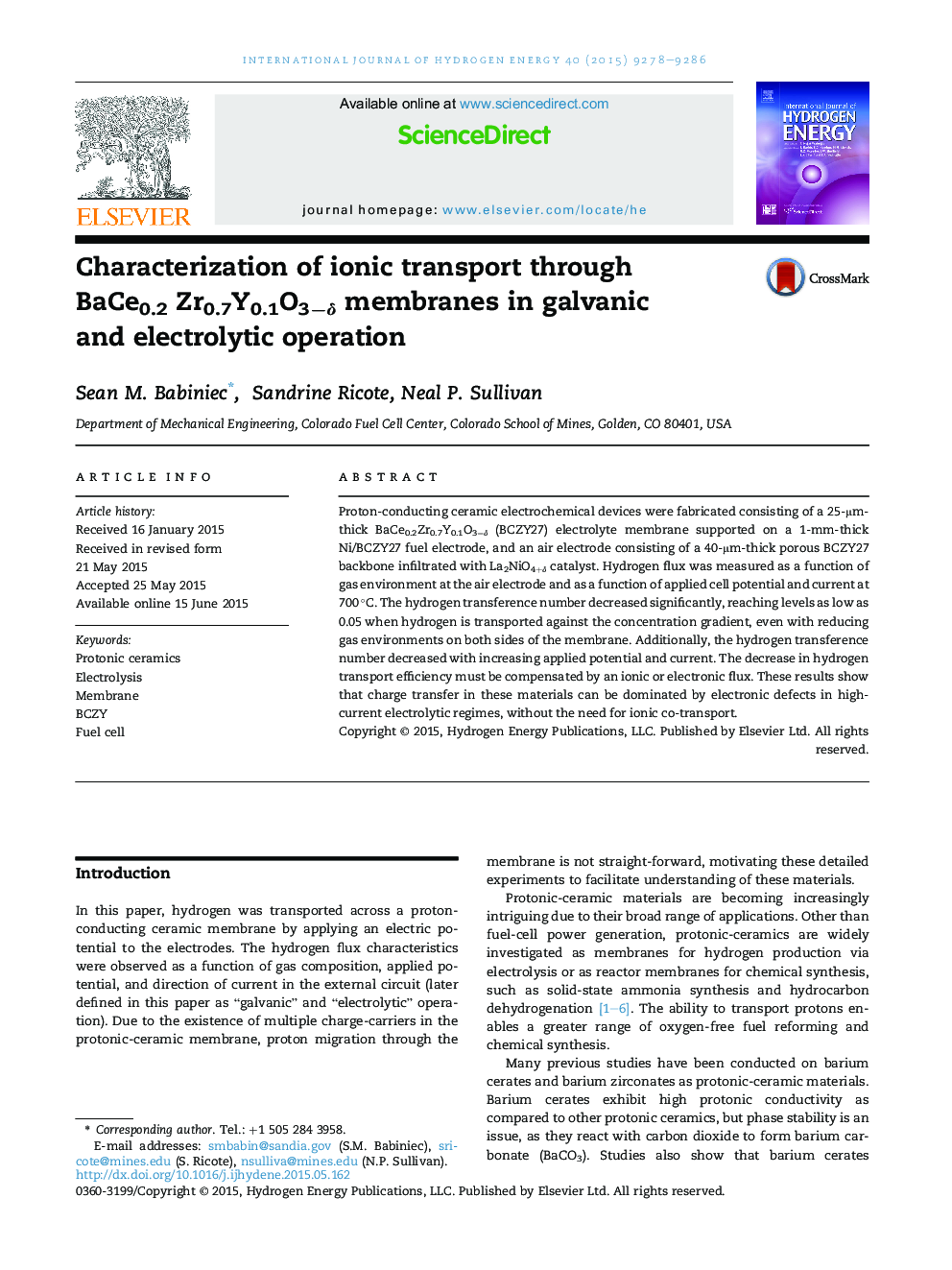| Article ID | Journal | Published Year | Pages | File Type |
|---|---|---|---|---|
| 7715211 | International Journal of Hydrogen Energy | 2015 | 9 Pages |
Abstract
Proton-conducting ceramic electrochemical devices were fabricated consisting of a 25-μm-thick BaCe0.2Zr0.7Y0.1O3âδ (BCZY27) electrolyte membrane supported on a 1-mm-thick Ni/BCZY27 fuel electrode, and an air electrode consisting of a 40-μm-thick porous BCZY27 backbone infiltrated with La2NiO4+δ catalyst. Hydrogen flux was measured as a function of gas environment at the air electrode and as a function of applied cell potential and current at 700 °C. The hydrogen transference number decreased significantly, reaching levels as low as 0.05 when hydrogen is transported against the concentration gradient, even with reducing gas environments on both sides of the membrane. Additionally, the hydrogen transference number decreased with increasing applied potential and current. The decrease in hydrogen transport efficiency must be compensated by an ionic or electronic flux. These results show that charge transfer in these materials can be dominated by electronic defects in high-current electrolytic regimes, without the need for ionic co-transport.
Related Topics
Physical Sciences and Engineering
Chemistry
Electrochemistry
Authors
Sean M. Babiniec, Sandrine Ricote, Neal P. Sullivan,
